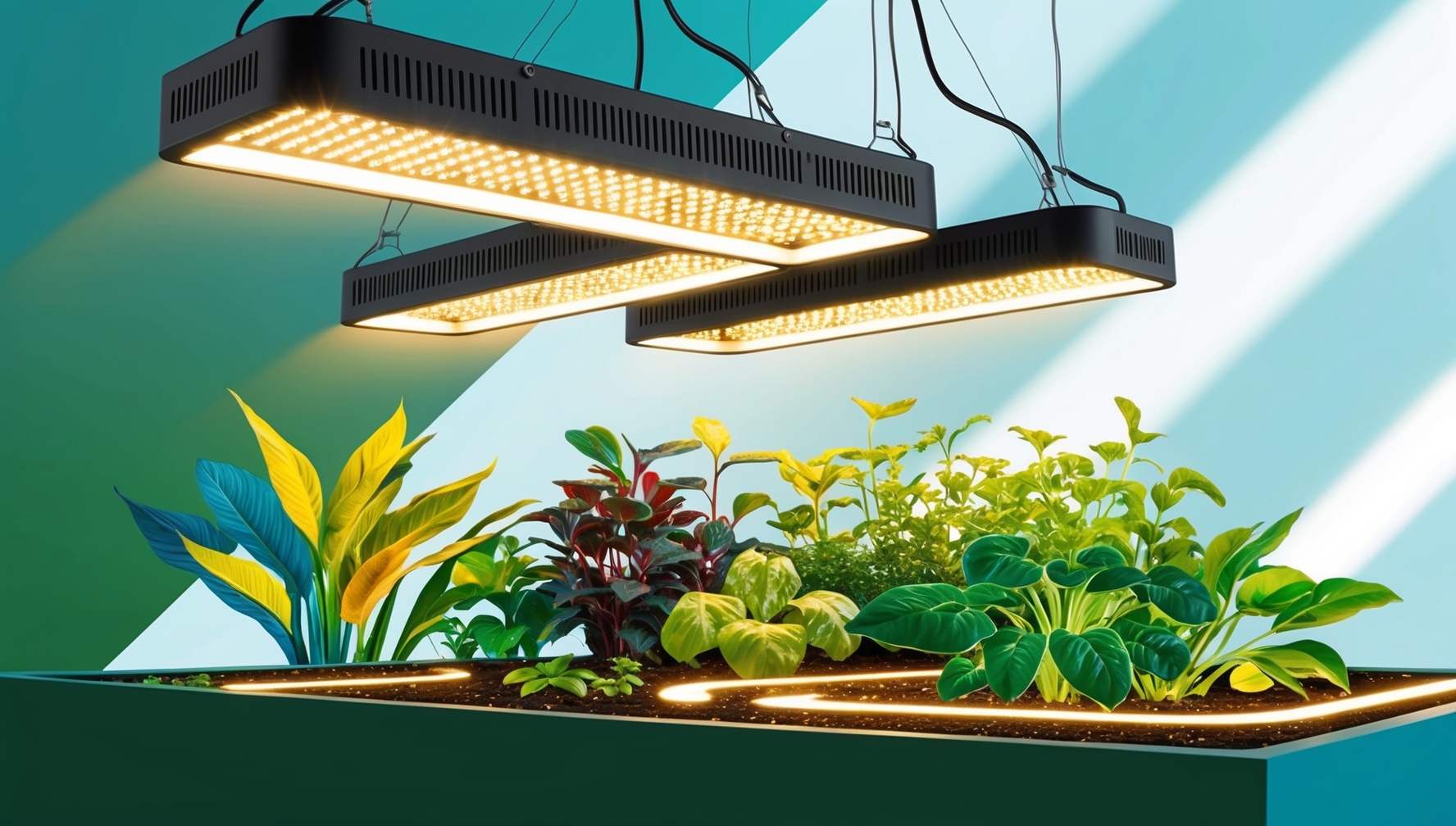LED lights have revolutionized various industries, and horticulture is no exception. The rise of indoor gardening, driven by urbanization and the growing interest in sustainable living, has led to increased demand for efficient and adaptable lighting solutions. LED lights, with their energy efficiency, spectrum control, and long lifespan, have become a popular choice for both commercial growers and home gardeners. This article explores how LED lights are transforming horticulture and indoor gardening, highlighting their benefits and applications.
Tailored Light Spectrum for Optimal Plant Growth
One of the most significant advantages of LED lights in horticulture is their ability to provide a tailored light spectrum that meets the specific needs of plants at different growth stages. Unlike traditional lighting systems, which emit a broad spectrum of light, LEDs can be fine-tuned to deliver the precise wavelengths required for photosynthesis, flowering, and fruiting.
For example, blue light (400-500 nm) is essential for vegetative growth, promoting strong stems and healthy leaves, while red light (600-700 nm) encourages flowering and fruit production. By adjusting the light spectrum, growers can optimize plant growth, increase yields, and improve the quality of their produce. This level of control is particularly beneficial in controlled environments like indoor gardens, where natural sunlight is limited.
Energy Efficiency and Cost Savings
LED lights are renowned for their energy efficiency, consuming significantly less power than traditional lighting options such as high-pressure sodium (HPS) or fluorescent lights. This reduced energy consumption translates to lower electricity bills, making LED lighting a cost-effective solution for both commercial and residential indoor gardening.
The energy savings are particularly pronounced in large-scale horticultural operations, where lighting is required for extended periods. By switching to LED lights, growers can reduce their operational costs and decrease their environmental footprint, all while maintaining or even enhancing their crop production.
Reduced Heat Emission
Another critical benefit of LED lights in horticulture is their low heat emission. Traditional lighting systems can generate significant amounts of heat, which can stress plants and disrupt their growth. In contrast, LEDs produce very little heat, allowing them to be placed closer to plants without the risk of overheating.
This reduced heat output not only protects plants but also allows for more compact and efficient growing setups. Additionally, LED outdoor and landscape lighting can benefit from the same low heat emission, ensuring safe and energy-efficient illumination for gardens and outdoor spaces. Growers can utilize vertical farming techniques or place lights closer to the canopy, maximizing space and ensuring even light distribution. The cooler operating temperatures of LEDs also reduce the need for additional cooling systems, further lowering energy costs and simplifying climate control in indoor gardens.
Longevity and Durability
LED lights have a much longer lifespan compared to traditional lighting options, often lasting 50,000 hours or more. This longevity is especially advantageous in horticultural applications, where lights are used extensively and continuously. Fewer replacements mean reduced maintenance costs and less frequent disruptions, ensuring consistent lighting for plants.
Additionally, LED lights are more durable and resistant to environmental factors like humidity and temperature fluctuations, making them well-suited for the challenging conditions often found in greenhouses and indoor growing environments.
Flexibility and Customization
The flexibility and customization options offered by LED lighting systems make them ideal for a wide range of horticultural applications, as well as other fields such as art and entertainment where precise control over lighting is crucial. Growers can choose from various light spectrums, intensities, and configurations to create the perfect environment for their specific crops. Whether it’s leafy greens, flowering plants, or fruit-bearing trees, LEDs can be tailored to meet the unique needs of each plant type.
Moreover, LED systems can be integrated with smart controls, allowing for automated adjustments based on the time of day, plant growth stage, or environmental conditions. This level of precision and control enhances crop yields, reduces waste, and supports more sustainable growing practices.
Supporting Year-Round Cultivation
One of the key challenges in horticulture, particularly in regions with harsh climates or limited daylight, is maintaining year-round cultivation. LED lights enable growers to extend the growing season by providing consistent, reliable lighting regardless of external weather conditions. This capability is particularly valuable for producing high-value crops, such as herbs, microgreens, and specialty flowers, which require a controlled environment to thrive.
Year-round cultivation not only boosts productivity but also allows for continuous supply, meeting market demand and ensuring a steady income for growers.
Applications in Vertical Farming
Vertical farming, a method of growing crops in stacked layers or vertically inclined surfaces, has gained popularity as a solution to the challenges of urban agriculture and space limitations. LED lights are integral to the success of vertical farming systems, providing the necessary light spectrum while minimizing energy use and heat output.
The compact and efficient design of LED lighting allows for closer placement to plants, maximizing space utilization and ensuring uniform light distribution across all levels of the farm. This results in higher crop density, better yields, and more efficient use of available space, making vertical farming a viable option for urban environments.
Conclusion: Illuminating the Future of Horticulture
LED lights have transformed the landscape of horticulture and indoor gardening, offering a range of benefits that enhance plant growth, reduce energy consumption, and support sustainable practices. With their ability to provide a tailored light spectrum, low heat emission, and long lifespan, LEDs are a versatile and cost-effective solution for growers of all sizes. As technology continues to advance, the role of LED lighting in horticulture is set to expand, illuminating the future of sustainable agriculture and urban farming.
